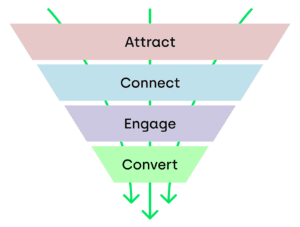This week, we’re continuing with our June blog series on Measuring Up To Marketing: How PR Fits Into The Mix. Our focus is shifting to collaborating with marketing on communications objectives and business goals. As well as discussing how Comms teams can work with their marketing colleagues to achieve greater impact for the brand.
How can marketing and PR jointly contribute to business goals?
Marketing and PR have overlapping competencies and functions, so it’s a good idea for to work together. One of the most important pieces to this puzzle is sharing objectives from the start.
When collaborating with marketing its important to share organization’s business goals. Not just to have a full picture of where their brands are going, but also to create strategies that contribute to these goals. This means that both marketing and communications are pulling together toward supporting organizational success.
“Because of the metrics we are tracking, PR has become part of Mimecast’s Objective Key Results (OKRs) dashboard at the executive level. Our team is now integrated into the overall marketing effort. Our head of marketing asked us to package PR data on a quarterly basis for all regional executives. This regional data is shared to help guide marketing plans. This has certainly helped us stay funded and keep the right conversations going across our entire organization.” ~ Sr Director, Global Corporate Communications, Mimecast
Aligning objectives with the customer journey
Marketers have become experts at aligning their objectives to business goals. These typically boil down to revenue targets. The way they do it is by outlining the full customer journey. This starts with awareness about the company’s offerings and concludes with initial and repeat purchases (ideally, we all want loyal customers who purchase from us over and over again!).
Another way to look at the customer journey is a marketing funnel — a visualization for understanding the process of turning prospects into customers:

With this framework, collaborating with marketing is made easy. Both marketing and communications can set their objectives for each step in the funnel, or customer journey. And while traditionally, PR has been thought of in terms of the “top of the funnel”, or the Attract, Connect and Engage stages, with today’s technology like Onclusive we can measure the impact of communication all the way through Convert.
Using an objective-setting and measurement framework such as the one described above helps communicators to:
- Create standards and consistent ways to measure success over time
- Align with marketing strategies and dashboards
- Speak the language of the C-suite when it comes to results
- Demonstrate the value of and secure investment in PR
Collaborating with marketing
Now that the communications objectives have been aligned with the business goals, how can PR teams work more collaboratively with other marketing teams to develop and execute strategies, share insights, compare data and drive more impact? Let’s take a look at a few different areas and opportunities for cross-functional synergies.
Strategy:
Any strategy should be rooted in clear goals. Make sure both PR and marketing go through the objective-setting exercise first. Your strategy is the roadmap for achieving these goals and objectives. If communications and marketing objectives are aligned, the strategy to achieve those will most likely be aligned, interconnected and interdependent, as well.
Messaging:
Messaging is another great collaboration opportunity for marketing and PR. Start by sharing which messages have worked best so far on both ends, and any insights you have separately collected on your audiences’ needs and aspirations. Communicators can offer data from media monitoring, social listening, media relations and campaign measurement, while marketers can contribute the results of focus groups, customer surveys, promotions and other tactical activity.
Content marketing & thought leadership:
To create content that will attract your target customers and speak to their needs at every step of the customer journey, make it a point to review your editorial calendars with marketing on a quarterly or monthly basis. While you can keep a pulse on what your target publications are covering, your content marketing team can pick up these themes to amplify potential media coverage with blogs, case studies, eBooks and more. On the flipside, you can also repurpose existing marketing content into PR content to increase exposure for your brand.
Social media & influencer marketing:
Communicators and marketers can set out a joint social / influencer strategy from the get-go and establish clear roles and responsibilities. Sometimes, there will be representatives from both functions partnering with specific influences together. At other times, there will be shared expertise, data and insights on social campaigns running in parallel through PR and marketing.
Brand management:
Start by brainstorming brand management strategies together as you’re doing your annual planning and sharing results with each other during quarterly reviews. It’s also essential to have PR and marketing operations integrated when crises arise. Since marketers now share social media with communicators, having a joint reputation management strategy will help you stay ahead of a crisis and maintain a consistent brand image.
Integrated measurement:
Your marketing colleagues most likely already have established effectiveness-tracking systems, dashboards and ways to share results with the C-suite. You can tap into these assets and expertise to create a communications measurement framework that aligns with the marketing metrics. PR can contribute to business goals by influencing awareness, improving brand reputation and engagement, and even driving website traffic and desired actions from your audience.
Watch Onclusive’s Measuring Up To Marketing: How PR Fits Into The Mix webinar here. During this event, we discuss how to think about performance and metrics in ways that are more comparable to marketing. As well as, best practices for PR measurement and reporting into the C-suite.
